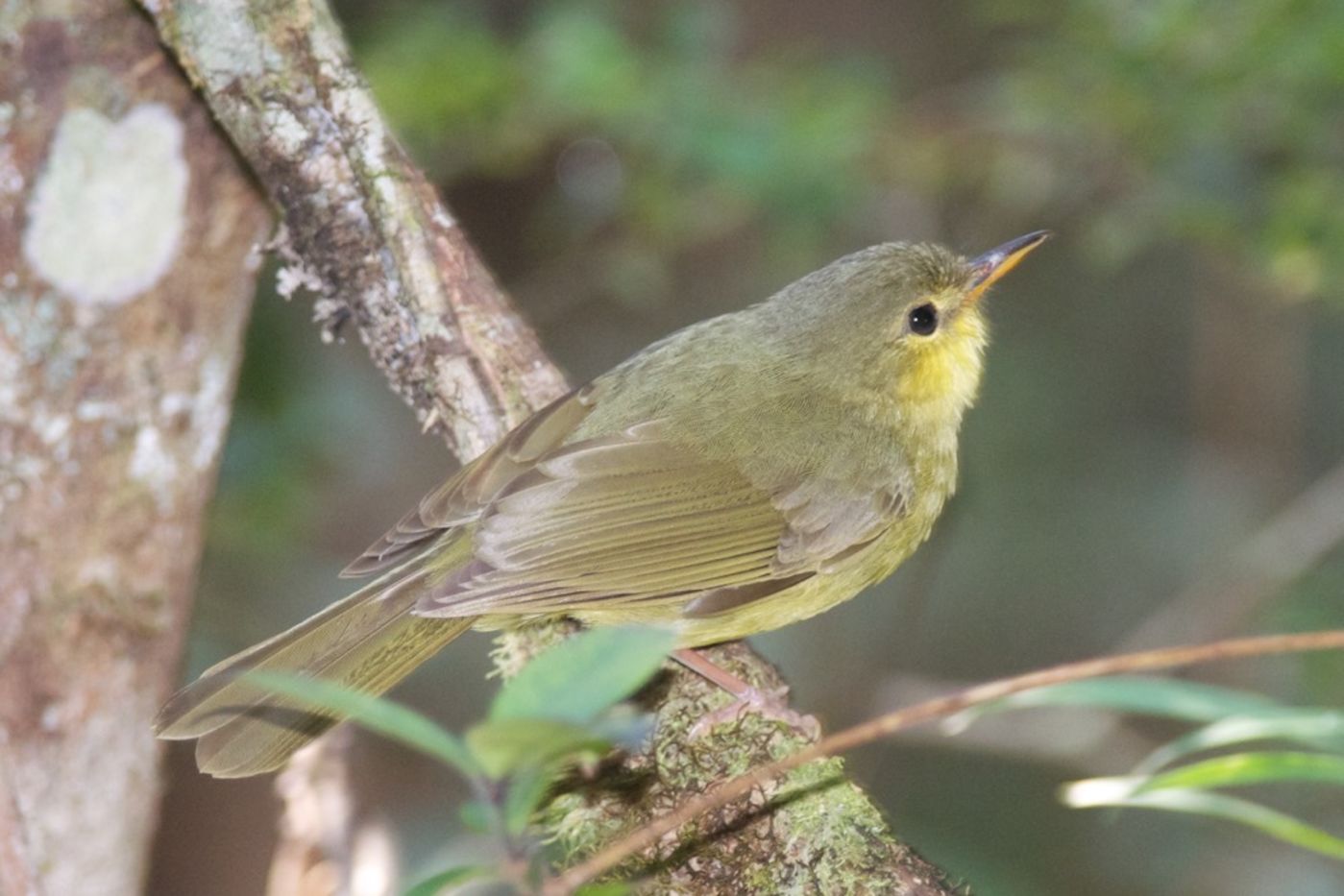Scientists Discover Evolution Working “Backwards” in Tropical Birds
For Immediate Release
October 7, 2015
The Field Museum Public Relations
media@fieldmuseum.org
312.665.7100
Scientists Discover Evolution Working “Backwards” in Tropical Birds
Museum study shows that separate species merged back into one in rare “despeciation” process

© Ken Behrens
Evolution isn’t a one-way street, with one parent species moving forward into more and more distinct species. Studying tropical songbirds, Field Museum scientists have discovered a rare evolutionary pathway in which separate species likely have merged back together into one.
The scientists’ findings, which were published in Ecology and Evolution, reveal a side of evolution that is almost never seen in animals. “This is something that lots of people would have said couldn’t happen,” says John Bates, associate curator of birds and one of the paper’s authors. “It’s a very unusual pattern of evolution, but this discovery illustrates that unusual things do happen.”
The birds in question are called Spectacled Tetrakas—small, yellow-green songbirds from Madagascar. They were a focus of the dissertation research of Dr. Nicholas Block at the Museum and the Committee on Evolutionary Biology at the University of Chicago. Block is currently an Assistant Professor at Stonehill College in Easton, MA. Block and his colleagues report that these common birds have an unusual history—they’re one of the only animals we know of that has undergone despeciation. The team analyzed the birds’ DNA—and their lice—to determine the birds’ biological heritage.
Animals have more than one kind of DNA, and those different types can tell us different things about evolutionary history. The Spectacled Tetrakas’ mitochondrial DNA (“mtDNA”) varies up to 7.6% from one bird to the next—a huge amount for animals of the same species, let alone animals living side by side the way these birds do (for reference, humans’ mtDNA from anywhere in the world varies by no more than 1.5%). Meanwhile, the birds’ nuclear DNA—the instructions for their physical and chemical makeup—is extremely similar. The fact that these birds’ mtDNA is so different points to a varied evolutionary history—birds that are the same species today had different ancestors—but since their nuclear DNA is so similar, the separate species must have come back together. In a sense, evolution worked “backwards”—what the authors call “despeciation.”
But the DNA evidence, though strong, isn’t proof of despeciation on its own—to streng~~e~~then their hypothesis, the scientists looked at the birds’ lice. Parasites like lice often evolve along with a specific host species, to the point that in some areas, each bird species has its own unique species of louse. The scientists found that the Spectacled Tetrakas from different areas in Madagascar were hosts to different kinds of lice, indicating that the different louse species evolved when the bird lineages were separated and maintained that separation when the birds blended together to become the tetrakas of today.
In Madagascar’s history, the island has gone through long periods of dry and wet weather. When it’s rainier, pathways between forests are linked together, but when it’s dry, the patches of forest become closed off to each other. Scientists believe that the tetrakas’ ancestors branched out into separate, isolated species when the climate was dry and then came back together when the climate became wetter and the forest “paths” regrew.
Bates notes that while despeciation is considered rare, it may happen more often than we think. And given the changes to the environment that humans are causing, we may be ushering in more change and species loss. “With despeciation, the parent species become extinct,” says Bates. “We’re almost certainly putting various parts of life on earth in a position where things like this are happening, and we need to understand it—we’re stewards of biodiversity on this planet. We’re responsible for preserving the earth’s species, and knowing more about how evolution works can help us do that.”
#